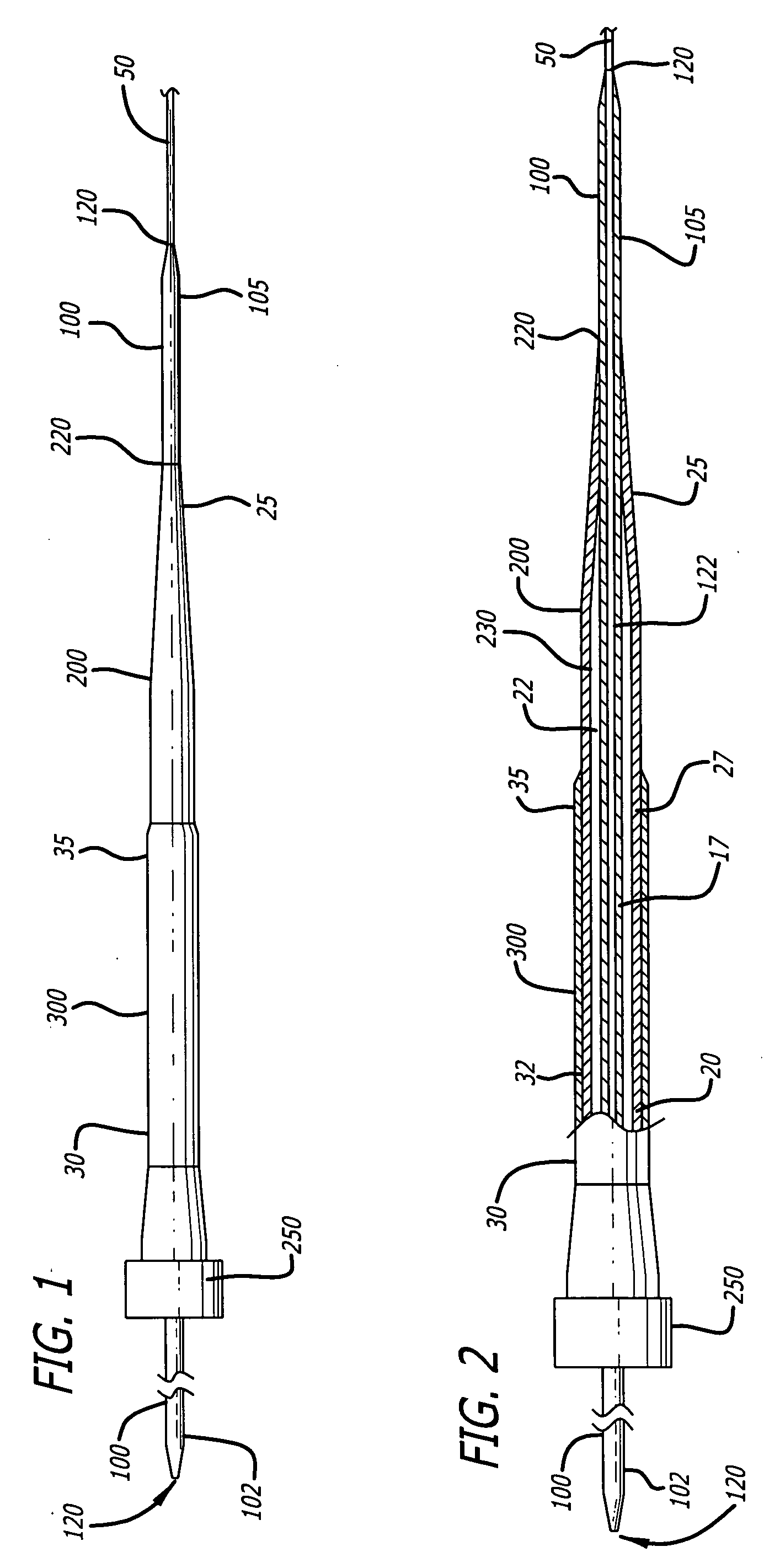Telescoping vascular dilator
a vascular dilator and telescoping technology, applied in the field of vascular dilators, can solve the problems of dilators and sheaths, dilators described in the prior art, and large intravascular devices of a special challenge for minimally invasive insertion, and achieve the effect of minimal blood loss and minimal invasiveness
- Summary
- Abstract
- Description
- Claims
- Application Information
AI Technical Summary
Benefits of technology
Problems solved by technology
Method used
Image
Examples
Embodiment Construction
[0043] Referring to FIGS. 1 and 2, the present invention includes at least one larger diameter dilator 200 that may be circumferentially and telescopically passed over at least one smaller diameter dilator 100. The smaller diameter dilator 100 may be circumferentially passed over a guidewire 50 that has been percutaneously inserted into a blood vessel. Because an inner channel 122 of the smaller diameter dilator fits snugly around the guidewire 50, once the smaller diameter dilator 100 has been passed over the guidewire 50, the guidewire 50 may be prevented from kinking. The larger diameter dilator 200 can then safely be passed over the smaller diameter dilator 100. The larger diameter dilator 200 may be further detachably connected with a sheath 300 by a fitting 250 that detachably locks the larger diameter dilator 200-and sheath 300 together in position for insertion into the blood vessel. The larger diameter dilator 200 is capable of being unlocked from the sheath 300 after inser...
PUM
 Login to View More
Login to View More Abstract
Description
Claims
Application Information
 Login to View More
Login to View More - R&D
- Intellectual Property
- Life Sciences
- Materials
- Tech Scout
- Unparalleled Data Quality
- Higher Quality Content
- 60% Fewer Hallucinations
Browse by: Latest US Patents, China's latest patents, Technical Efficacy Thesaurus, Application Domain, Technology Topic, Popular Technical Reports.
© 2025 PatSnap. All rights reserved.Legal|Privacy policy|Modern Slavery Act Transparency Statement|Sitemap|About US| Contact US: help@patsnap.com



